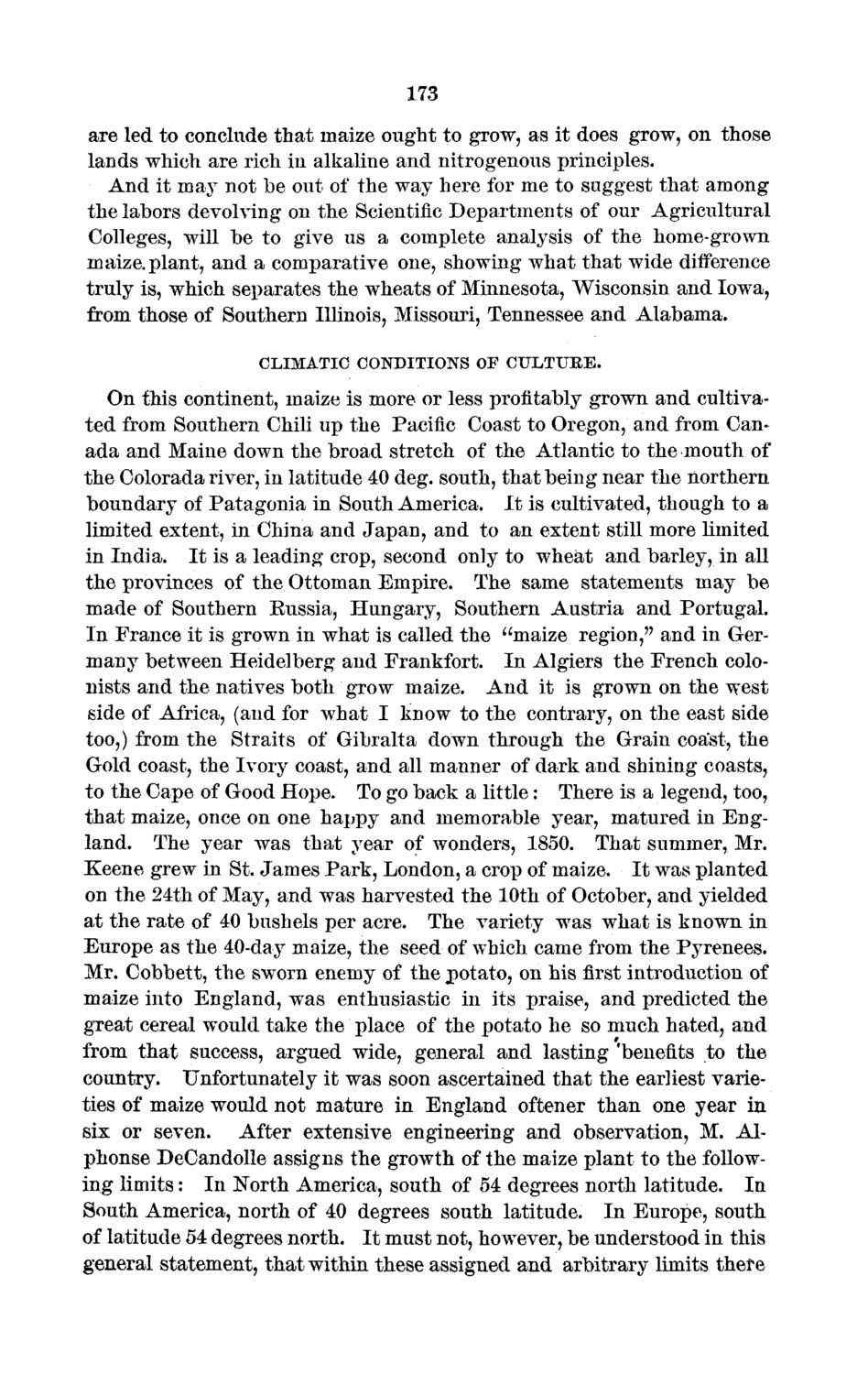| |
| |
Caption: Board of Trustees Minutes - 1872
This is a reduced-resolution page image for fast online browsing.

EXTRACTED TEXT FROM PAGE:
173 are led to conclude that maize ought to grow, as it does grow, on those lands which are rich in alkaline and nitrogenous principles. And it may not be out of the way here for me to suggest that among the labors devolving on the Scientific Departments of our Agricultural Colleges, will be to give us a complete analysis of the home-grown maize.plant, and a comparative one, showing what that wide difference truly is, which separates the wheats of Minnesota, Wisconsin and Iowa, from those of Southern Illinois, Missouri, Tennessee and Alabama. CLIMATIC CONDITIONS OF CULTURE. On this continent, maize is more or less profitably grown and cultivated from Southern Chili up the Pacific Coast to Oregon, and from Canada and Maine down the broad stretch of the Atlantic to the mouth of the Colorada river, in latitude 40 deg. south, that being near the northern boundary of Patagonia in South America. It is cultivated, though to a limited extent, in China and Japan, and to an extent still more limited in India. It is a leading crop, second only to wheat and barley, in all the provinces of the Ottoman Empire. The same statements may be made of Southern Eussia, Hungary, Southern Austria and Portugal. In France it is grown in what is called the "maize region," and in Germany between Heidelberg and Frankfort. In Algiers the French colonists and the natives both grow maize. And it is grown on the west side of Africa, (and for what I know to the contrary, on the east side too,) from the Straits of Gibralta down through the Grain coast, the Gold coast, the Ivory coast, and all manner of dark and shining coasts, to the Cape of Good Hope. To go back a little: There is a legend, too, that maize, once on one happy and memorable year, matured in England. The year was that year of wonders, 1850. That summer, Mr. Keene grew in St. James Park, London, a crop of maize. It was planted on the 24th of May, and was harvested the 10th of October, and yielded a/t the rate of 40 bushels per acre. The variety was what is known in Europe as the 40-day maize, the seed of which came from the Pyrenees. Mr. Cobbett, the sworn enemy of the potato, on his first introduction of maize into England, was enthusiastic in its praise, and predicted the great cereal would take the place of the potato he so much hated, and from that success, argued wide, general and lasting 'benefits to the country. Unfortunately it was soon ascertained that the earliest varieties of maize would not mature in England oftener than one year in six or seven. After extensive engineering and observation, M. Alphonse DeCandolle assigns the growth of the maize plant to the following limits: In North America, south of 54 degrees north latitude. In South America, north of 40 degrees south latitude. In Europe, south of latitude 54 degrees north. It must not, however, be understood in this general statement, that within these assigned and arbitrary limits there
| |